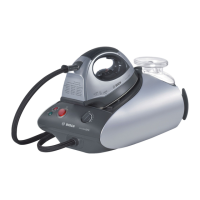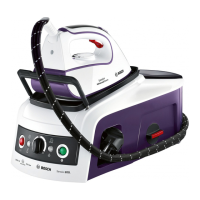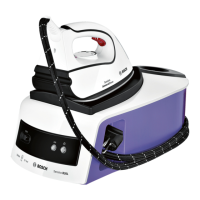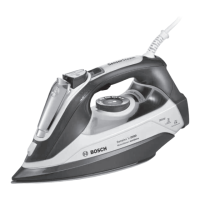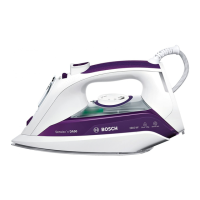214_58300000171747_ARA_EN_A – 01.03.a Seite 35 von 39
9. Check the solenoid valve opens to connect it directly to the
power (sound of opening). In this case, change the solenoid
valve, sealing joints threaded with Teflon.
10. Check the general status of the soleplate. In extreme cases,
lime deposits can clog the steam outlet holes.
7.7 External parts are broken
This may be due to damage in transit or while in use.
In this case, decide how the damage has happened depending on the
state of the iron. If it is obvious that the iron has been used a lot,
because of the presence of scale, etc., the damage has occurred
during use.
However, if the iron does not appear to have any traces of scale, the
cord is wound up as at the factory, etc., the damage has occurred
during transit.
In these cases, the solution consists of informing the user of the terms
of the guarantee.
7.8 Dirt in the openings
7.8.1 A product has been added to the water (e.g. perfume,
softener, etc...)
In these cases, it will be necessary to check the tank and the dosing
assembly because characteristic stains of the product that has been
added will normally have been left behind. Inform the user that the
terms of the guarantee do not cover repairs arising from the misuse of
the appliance.
7.8.2 Limescale residue
The presence of limescale within the base normally gives rise to one
of the following symptoms:
- Dirty water (“brown”) through the openings on the base: If
the user claims that the iron is staining clothes or that brown
droplets are coming out of the openings on the iron base, this is
most probably due to limescale within the steam chamber
(inside the base) or in the boiler.
- Limescale stains (white or brown) around the openings on
the base: In these cases, the limescale is more serious and
could even block the openings on the base.
The way to proceed in these cases is as follows:
- If there is a low level of limescale (not blocking the openings):
clean affected component.
- If there is a high level of limescale: Replace affected
component.

